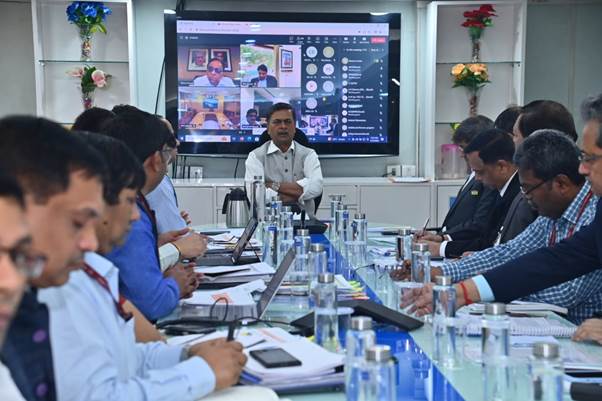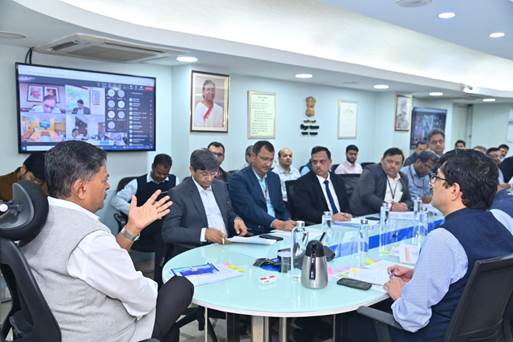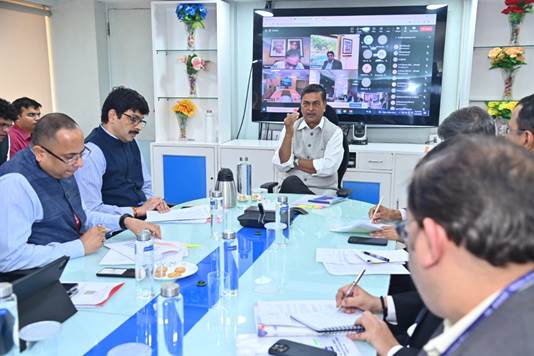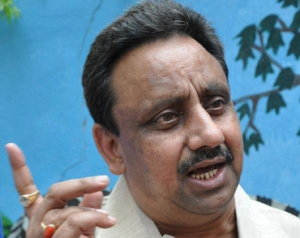New Delhi :-
India needs 24×7 availability of power for its economic growth; This power cannot be achieved by renewable energy sources alone: Union Power and New & Renewable Energy Minister R. K. Singh
Union Power and New & Renewable Energy Minister R. K. Singh urges the industry to invest in thermal power; Says, those in the power business will miss out if they are not adding capacity
“Thermal Energy cannot be written off till storage becomes cost-effective for Round-the-Clock supply through Renewable Energy”: Union Power and New & Renewable Energy Minister R. K. Singh
Union Power & NRE Minister asks States to ensure full availability of their thermal capacity
The Union Minister for Power and New & Renewable Energy Shri R. K. Singh held an interaction with stakeholders in the power sector in New Delhi on 21st November, 2023 to review thermal power capacity addition and facilitate the industry to overcome any problems being faced by them. Officers of the Ministry of Power, state governments, Central Electricity Authority, Public Sector Enterprises under the Ministry such as NTPC, REC, PFC, as well as other PSUs such as BHEL, and industry participants including independent power producers and vendors joined the meeting.

“We are working on adding at least 55 GW – 60 GW thermal capacity”
Addressing the PSUs and industry, the Power Minister informed everyone about the government’s decision to add 80 GW thermal power capacity by the year 2031-32, and why this is crucial for meeting the nation’s power requirements. “Power demand of the country has increased at an unprecedented rate due to rapid growth of the economy. India needs 24×7 availability of power for its economic growth; and we are not going to compromise on availability of power for our growth. This power cannot be achieved by renewable energy sources alone. Since nuclear capacity cannot be added at a rapid pace, we have to add coal-based thermal capacity for meeting our energy needs. We have 27 GW under construction, and we had thought that we will add another 25 GW. But we have decided that we will start work on at least 55 GW – 60 GW of thermal capacity. As demand keeps accelerating, we will keep adding this capacity.”
As per the projections of National Electricity Plan for the period 2022-32, the required coal and lignite based installed capacity will be 283 GW by 2031-2032 as against the present installed capacity of 214 GW.
“States which have thermal capacity must maintain and run them”
Shri Singh said that states which have thermal capacity must make sure that it is available and that any renovation, modernization or life extension for the thermal plants is done in time. “If you do not maintain your thermal capacity and instead expect us to give power from central reserve, that is not going to happen. We will allocate additional power to those states which are maintaining and running their capacities. Further, those who want to add capacities may do so.”
You will keep getting a steady line of orders for next 5 – 7 years, start preparing; Be ready for indigenous development and take this opportunity as a challenge to evolve and grow: Minister tells industry
The Power and New & Renewable Energy Minister urged the industry to plan for addition of thermal capacity. “ Given the power needs, the industry will keep getting orders for thermal capacity addition for the next 5 – 7 years. Thermal energy was written off a few years ago, which was premature. Thermal cannot be written off until energy storage becomes viable. So, thermal is going to stay until energy storage becomes cost-effective for Round-the-Clock supply through Renewable Energy. Hence, industry needs to ramp up thermal capacity,” the Minister said. Shri Singh stressed that assistance from outside world may be limited, so the Industry must be ready for indigenous development and take this opportunity as a challenge to evolve and grow.

The Minister told the industry that those in the power business will miss out if they are not adding capacity. “Demand will continue to grow at a rapid pace. Prices in exchange are going to remain high. Those who add capacity will gain and those who don’t will miss out on a golden opportunity.”
Shri Singh said that the business environment in the power sector is excellent. “We have put in place a payment security mechanism which does not have any parallel anywhere in the world. Payment is guaranteed within 75 days; current dues are 100% up to date. Even the legacy dues are also being paid.” The Minister added that the demand and supply balance for the next 20 – 25 years will be such that it will be a suppliers’ market. He advised the industry to ramp up manufacturing capacities in order to meet demand, so that they are ready for the huge capacity which is coming up.

The EPC vendors such as GE & L&T voiced their concerns regarding bidding process. They were assured that their concerns shall be looked into. Other equipment suppliers also raised issues like shortage of credit in the market, Bank Guarantees, Qualifying Requirements and Technical Specifications.
The Minister asked the vendors and contractors to submit their concerns and suggestions so that workable solutions may be devised. He assured them DISCOMs’ future power requirements will be collated and shared with the power developers and asked them in turn to share as to how much capacity they can ramp up.
Echoing the Minister’s statements, Power Secretary Shri Pankaj Agarwal said in his opening remarks that based on National Electricity Plan projections and other analysis done by the Ministry, thermal energy is going to stay very relevant even in the year 2047. “The country absolutely needs at least 80,000 MW of capacity addition from today till 2031-32, which is essential to meet our base load requirements. Non-solar-hours are going to be a serious challenge, in light of growing power demand and considering weather events like what we faced in August this year. Equipment providers must gear up their requirements, vendors should be strengthened and states and central entities may plan their projects.” The Secretary exhorted the private sector to seize the opportunity and add capacities proactively.
***


